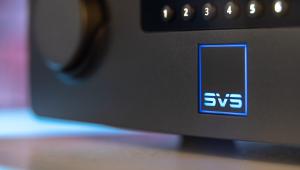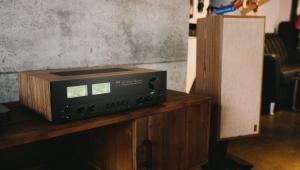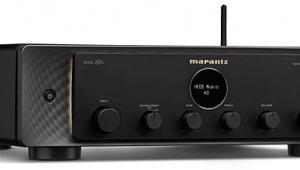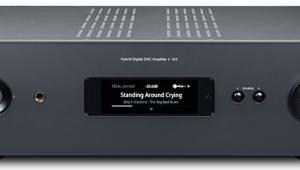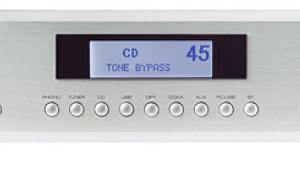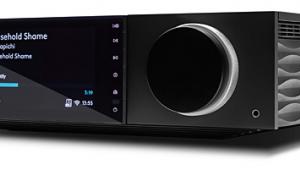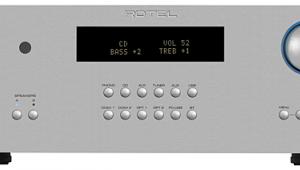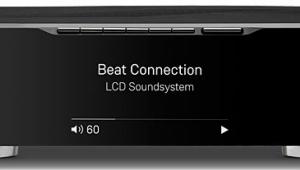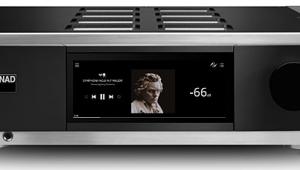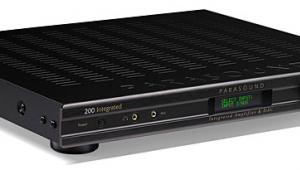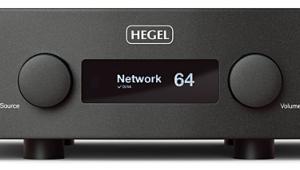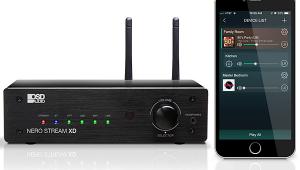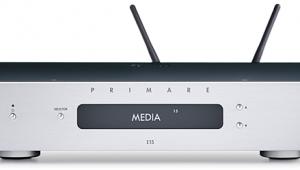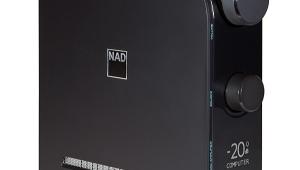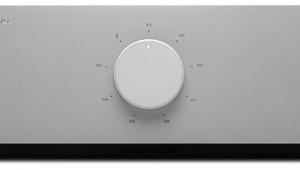Elac Element EA101EQ-G Integrated Amplifier/DAC Review

AT A GLANCE
Plus
Good power in compact form
Outstanding app-enabled subwoofer auto-setup
Onboard 192/24 USB DAC
Minus
No line outputs for external amp
Small display
THE VERDICT
Elac’s Element EA101EQ-G amp/DAC nails the sweet spot of price, performance, and worthwhile features with surprisingly audiophile sound and the added value of auto-EQ and app-enabled subwoofer crossover/blending.
It’s an amplifier. It’s a USB DAC. It’s a room/subwoofer equalizer. It’s a headphone amp. It’s an app-enabled Bluetooth receiver. It’s all of these, and it’s only $699—and it’s from the revived German brand Elac, whose latest Andrew Jones–designed loudspeakers have won acclaim in these pages and elsewhere. Ultimately, Elac’s Element EA101EQ-G may be best characterized as what the stereo receiver is morphing into for the 21st century. There’s no FM or AM on board (why would there be?), and the form factor is entirely different, but the market niche is equivalent: the backbone of a music-playback system for those to whom sound quality is paramount. Most folks today can live happily enough with earbuds, a smartphone, and a Bluetooth speaker or two (previously, they would’ve been happy with a Walkman and a boombox), but serious music lovers still demand something more. With this integrated amp/DAC combo, Elac is positioned to deliver it.
BASH-Fest
The EA101EQ-G is a two-channel integrated amp, probably of about 40 watts per channel. I say “probably” and “about” because Elac specs power at only 1 kilohertz (40 watts into 8 ohms and 80 watts into 4 ohms) rather than over the 20-hertz-to-20-kHz range usually stated for serious audio products. (Check our Test Bench measurements for the confirmed details.) The topology in question is BASH (Bridged Amplifier Switching Hybrid), in which a conventional Class A/B output stage uses a sort of simplified Class D amp as its power supply. The switch-mode supply tracks the input, keeping power-supply voltages just above the audio signal’s momentary demand, yielding near-Class D heat, power-consumption, and packaging efficiencies while retaining a Class A/B audio signal path and characteristics. BASH has been common among subwoofer amps for a couple of decades, and it has been used without much fanfare in car audio, multimedia speakers, and other applications requiring efficient power and compact size. (Effectively, BASH is a lot like Class H, with the aforementioned tracking, switch-mode power supply and a soupçon of smarts thrown into the pot.)
Geekery aside, BASH’s efficient nature gives rise to the Element’s delightfully compact dimensions, almost exactly those of a box of Grape-Nuts cereal. Similar density, too (but far less crunchy). It’s a Teutonically handsome piece, with a glass-paneled fascia that has a single, smoothly detented volume knob, a couple of flush, capacitive-touch switch-pads for power and cyclical source-select, and a 1/4-inch headphone jack. The reverse features two analog stereo, one coax, and two optical digital inputs, along with a USB Type B input to the Element’s 192-kHz/24-bit DAC (of unspecified origin), a line-level sub output, and stereo speaker outputs on solid multi-way posts. (There’s also a USB Type A jack to deliver any future firmware updates via flash drive.) There are no full-range line outs, however, so you can’t use this as a preamp with a larger amplifier should you outgrow its internal power amp.

The Elac is so operationally simple as to be entirely intuitive, whether from the three-control front panel or the almost-as-simple remote. However, it can do much more if you first download its free Android or iOS app. (Only the Android version was ready for this review; the iOS version should be on iTunes as you read this.) I used a basic Android mini-tablet kindly purloined, temporarily, by colleague Al Griffin from a Vizio TV—and I quickly found Elac’s EA101EQ-G app on Google Play.
Of course, the app accesses all the basics—treble, bass, volume, balance, and subwoofer level—and it allows the naming and selecting of inputs. Its most interesting feature, though, is Auto Blend, which according to the manual “…first selects a high-pass filter, then using the smartphone’s microphone, measures the near-field response of both the main speakers and subwoofer…[and] then adjusts the low-pass filter to obtain optimal blending between the subwoofer and main speakers. Auto EQ minimizes the effects of the room’s acoustics, allowing you to hear the sound the designer intended.”
Oddly, this is the first and last mention of Auto Blend/EQ, either in print or online, in Elac’s materials. I’ll have much more to say, of course, but first comes the question of basic sound quality.
Sounds Like...
I’ve a deep-seated skepticism of reports of amplifiers “sounding” this way or that. Any competently designed modern amp, operating within its intended parameters, should be effectively transparent, at least until it approaches the limits of its usable dynamic range. (A big if, of course.) And the EA101EQ-G did little to alter my belief system. I auditioned the little Elac extensively full-range (subwoofer-less) and before applying any Auto Blend or Auto EQ. My primary source was my desktop iMac, playing hi-res audio files in DSD, FLAC, and WAV formats via its asynchronous, 192/24-capable USB input—which quickly revealed that the Element, whatever its Class or on-paper ratings, is an amplifier of substantial abilities.
Via my long-term, stand-mounted monitors (the long-discontinued Energy Veritas 2.3 speaker), track after track displayed no difference from the sound I’m accustomed to hearing from my everyday preamp and power amp—the latter rated for 150 watts per channel. Sure, the big power amp could play slightly louder, and the Elac’s stress signature when pushed well into clipping—a noticeable brightening that edged into “shoutiness” on high vocals, solo strings, and the like—was a bit different. But otherwise, it was a case of pick ’em.
After a few hours, I simply sat back and listened, and I loved what I heard. For example, a hi-res track like Kurt Weill’s suite from The Threepenny Opera yielded all the detail, air, and imaging specificity I expected. Indeed, the soundstage seemed to stretch from the outer edge of speaker to speaker and even a bit beyond. This is busy, contrapuntal music, but its considerable clarity and texture were fully evident—for example, in how the airy bell-strikes on the ride cymbal floated over all the brass, banjo, and woodwind busy-ness, with a truly live-music effect.


